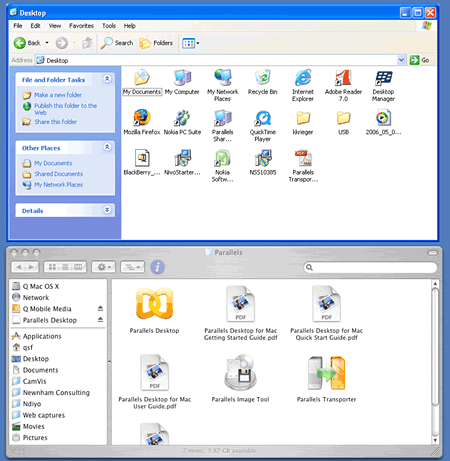There’s a new beta of Parallels Desktop for Mac – the virtualisation software that lets you run other operating systems in a window on your Mac. Follow the link to see a whole host of nice new features.
For example, you can resize the Parallels window and it just tells Windows to change to the right resolution. Very nice.
And there’s also the ‘coherence’ mode, which is a bit like a full-screen mode but with the background taken away, so you can see and interact with your Windows windows alongside your Mac ones:

And you can simply drag files from the Finder into your Windows world, which is very convenient. When I tried to go the other way, Windows blue-screened and then rebooted inside the window – remember, this is still a beta.
One thing that virtualisation has really brought home to me is just how little I need Windows. I installed Parallels when it first came out, had a quick check of my web sites to make sure they looked OK under IE, and then shut it down again. Since then I’ve run Ubuntu in a window many times, but I have only started up Windows for two reasons: to upgrade the firmware on my Blackberry, and to upgrade the firmware on my Nokia E61. There are Mac applications for normal interactions with these devices, but not for the low-level grungy stuff.
All of which makes me think that it may be virtualisation, rather than Netscape, that really fulfils Marc Andreessen’s 1995 prophecy about Windows being reduced to a “poorly debugged set of device drivers”.




Recent Comments